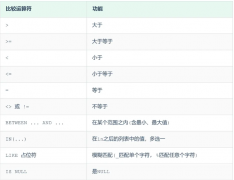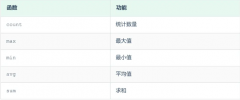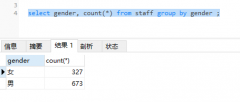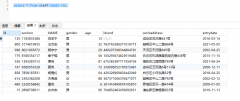TSql Complex Pivot(TSql 复杂枢轴)
问题描述
我有一张这样的桌子......
I have a table like this...
LEVEL Action Date User
--------------------------------------------------
1 Approve 01/01/2013 User1
2 Approve 02/01/2013 User2
3 Rejected 03/01/2013 User3
1 Approve 04/01/2013 User1
2 Approve 05/01/2013 User2
3 Approve 06/01/2013 User3
. . . .
. . . .
. . . .
我想要这个……
这可以使用 PIVOT 吗?
Is this possible using PIVOT?
LEVEL1 - User 1 LEVEL2 - User 2 LEVEL3 - User 3
---------------------------------------------------------------------------
01/01/2013 - Approve 02/01/2013 - Approve 03/01/2013 - Rejected
04/01/2013 - Approve 05/01/2013 - Approve 06/01/2013 - Approve
. . .
. . .
注意:级别数是动态的.例如完全批准一个项目可以是5个级别,6个级别等.所以数据透视表的列数是动态的.
推荐答案
是的,这可以使用 PIVOT 函数,我首先建议查看查询的硬编码版本,以便在移动到动态版本之前查看查询的编写方式查询.
Yes, this can be done using the PIVOT function, I would first suggest looking at a hard-coded version of the query so you can see how the query is written before moving to a dynamic version of the query.
静态版本类似于以下内容:
A static version will be similar to the following:
select [Level1 - User1], [Level2 - User2], [Level3 - User3]
from
(
select 'Level'+cast(level as varchar(1)) + ' - '+ [user] col,
convert(varchar(10), date, 101) +' - '+ action value,
row_number() over(partition by level order by [user], date) rn
from yt
) d
pivot
(
max(value)
for col in ([Level1 - User1], [Level2 - User2], [Level3 - User3])
) piv;
参见 SQL Fiddle with Demo.您会注意到 level 和 user 列被连接以创建新列,而 date 和 action连接起来为每列创建值.我还添加了一个 row_number() 来为每一行创建一个唯一值,这在您在 PIVOT 中应用聚合函数时非常重要.如果你不使用它,那么你将只得到一行.
See SQL Fiddle with Demo. You will notice that the level and user columns are concatenated to create the new columns, and the date and action are concatenated to create the value for each column. I also added a row_number() to create a unique value for each row, this will be important when you apply the aggregate function in the PIVOT. If you do not use this, then you will get only one row as a result.
由于您现在有一个工作版本,因此可以轻松地将其转换为动态版本:
Since you now have a working version, this can be converted to a dynamic version easily:
DECLARE @cols AS NVARCHAR(MAX),
@query AS NVARCHAR(MAX)
select @cols = STUFF((SELECT distinct ',' + QUOTENAME('Level'+cast(level as varchar(1)) + ' - '+ [user])
from yt
FOR XML PATH(''), TYPE
).value('.', 'NVARCHAR(MAX)')
,1,1,'')
set @query = 'SELECT ' + @cols + ' from
(
select ''Level''+cast(level as varchar(1)) + '' - ''+ [user] col,
convert(varchar(10), date, 101) +'' - ''+ action value,
row_number() over(partition by level order by [user], date) rn
from yt
) x
pivot
(
max(value)
for col in (' + @cols + ')
) p '
execute(@query);
参见 SQL Fiddle with Demo.两者的结果都是:
See SQL Fiddle with Demo. The result for both is:
| LEVEL1 - USER1 | LEVEL2 - USER2 | LEVEL3 - USER3 |
-----------------------------------------------------------------------
| 01/01/2013 - Approve | 02/01/2013 - Approve | 03/01/2013 - Rejected |
| 04/01/2013 - Approve | 05/01/2013 - Approve | 06/01/2013 - Approve |
这篇关于TSql 复杂枢轴的文章就介绍到这了,希望我们推荐的答案对大家有所帮助,也希望大家多多支持编程学习网!
本文标题为:TSql 复杂枢轴


- 如何将 Byte[] 插入 SQL Server VARBINARY 列 2021-01-01
- 如何将 SonarQube 6.7 从 MySQL 迁移到 postgresql 2022-01-01
- 以一个值为轴心,但将一行上的数据按另一行分组? 2022-01-01
- 导入具有可变标题的 Excel 文件 2021-01-01
- 远程 mySQL 连接抛出“无法使用旧的不安全身份验证连接到 MySQL 4.1+"来自 XAMPP 的错误 2022-01-01
- SQL 临时表问题 2022-01-01
- 如何使用 pip 安装 Python MySQLdb 模块? 2021-01-01
- 更改自动增量起始编号? 2021-01-01
- 使用 Oracle PL/SQL developer 生成测试数据 2021-01-01
- 在SQL中,如何为每个组选择前2行 2021-01-01









